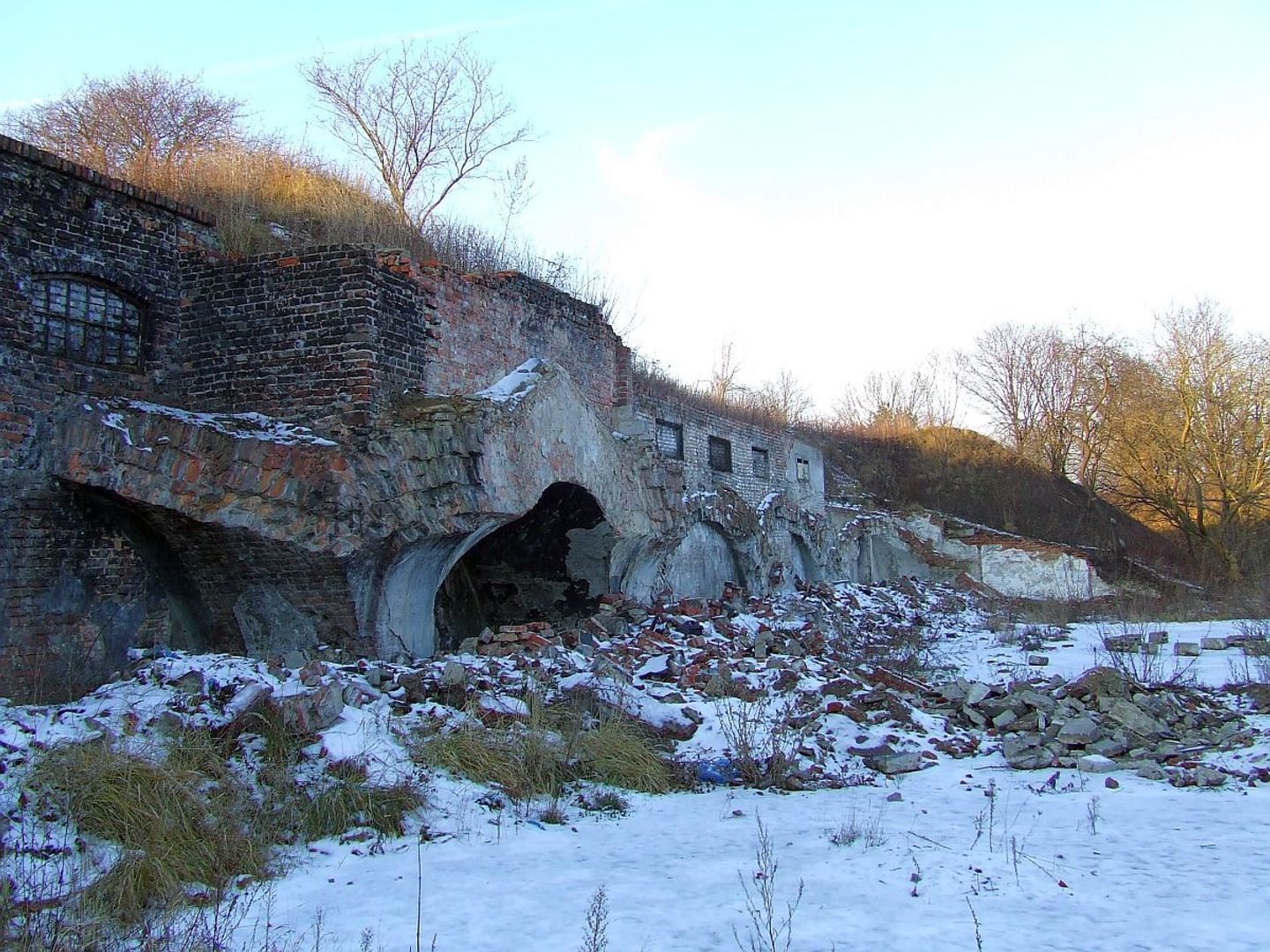Fort IV of the Warsaw Fortress
6.6

Overview
Fort IV "Chrzanów" is one of the forts of the outer ring of the Warsaw Fortress, built between 1883 and 1890. Its primary purpose was to defend the highway leading towards Poznań and the railway line. The fort has a pentagonal shape with two fronts that meet at an angle close to 180°. The external fortifications consist of an earth rampart surrounded by a dry moat, while the interior features brick barracks and a system of caponiers designed to defend against enemy attacks. The gorge (rear) of the fort includes a large caponier intended for covering the inter-fort areas, protected by an earthen ravelin. The fort measures approximately 400 meters in width and 200 meters in depth, excluding the gorge caponiers.
After 1909, as part of the decommissioning of the fortress, some of the fortifications were destroyed. In 1939, the fort witnessed combat involving the 360th Infantry Regiment, and after the war, it served as a meat processing plant and a technical warehouse. The facility was used by the PSS Społem cooperative until 1994, after which it was taken over by the military. Today, the fort is abandoned, and much of its original structure has been lost—half of the barracks building was demolished before World War II. A residential estate called Fort Chrzanów has been built on the site of the fort’s gorge, along Kopalniana Street.
Fort IV "Chrzanów" is listed in the register of historical monuments, highlighting its architectural and historical significance. Its history, military functions, and subsequent uses reflect changes in military operations and urban development in the region. Overall, the fort represents a fascinating case study in the history of military architecture in Poland and the urbanization of the areas around Warsaw.
Location
Tickets
Powered by GetYourGuide
2025 Wizytor | All Rights Reserved